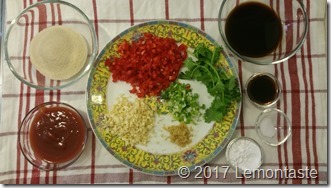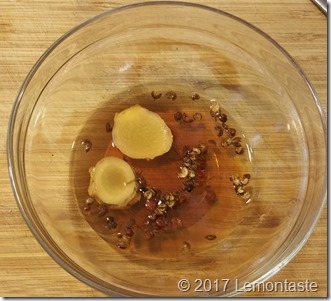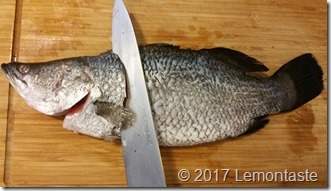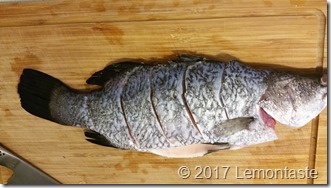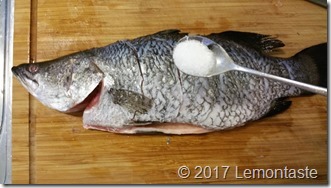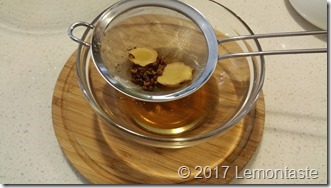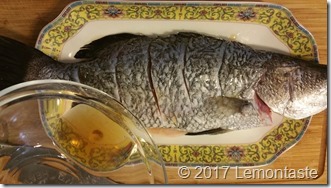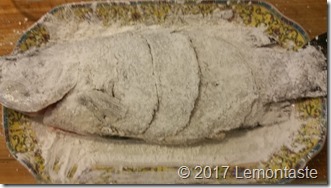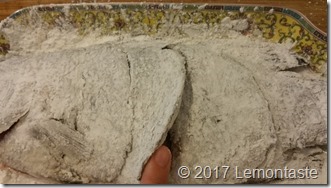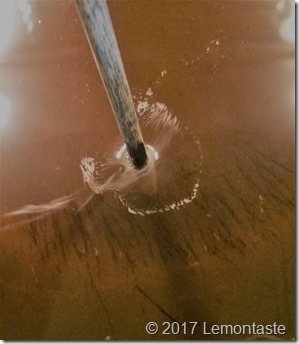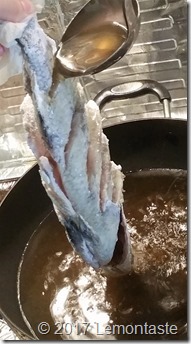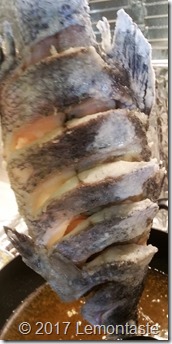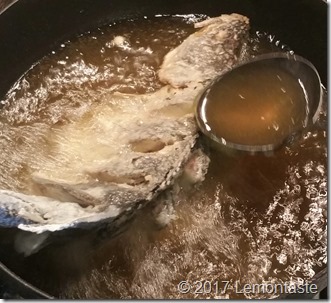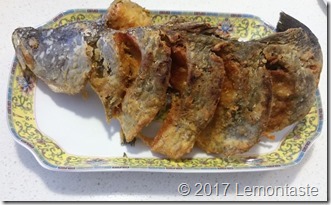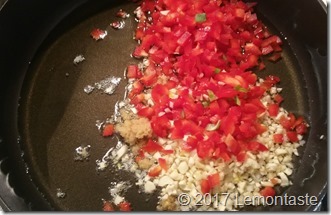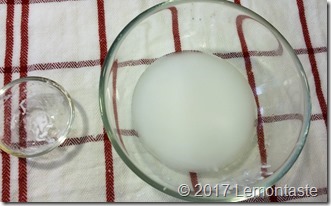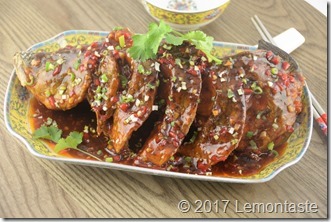Sweet Sour Fish (糖醋鱼)
In China, no matter what variety you may have for your New Year’s eve dinner, there is always one dish that is a “must have” for every Chinese family on the dinner table. It’s like turkey on Christmas dinner table, but we have the fish. A entire fish with both head and tail either steamed or braised. Fish in Chinese pronounces the same as “surplus”;. It means the family will have a prosperous year ahead.
Today I’m going to introduce the braised version with sweet and sour sauce. The fish is fried so it is crispy golden on the outside and flavoured tender inside. It is topped with beautiful red shining sauce. Very nice presentation and savory taste. It is also very popular in some of the Chinese wedding receptions because of the good presentation and underlying meaning.
I’ll go through detailed steps and and provide photos below to guide you through the process. If you like the taste of this sauce, you can use it in other meat dishes as well.
- Prep: 30mins
- Cooking: 15mins
- Serve: 5-6
INGREDIENTS
Part A
- 1 cleaned whole fish (with gut and scales removed) approx.. 500-600 g
- 2 tablespoons Chinese cooking wine
- 2 slices of ginger
- 1 teaspoon Sichuan pepper
- 3 tablespoons corn flour
- ~1 Liter Canola Oil (ensure oil can cover most of the fish when fry, adjust the measurement accordingly)
Part B
- ½ red capsicum
- 1 tablespoon finely chopped garlic mince
- ½ teaspoon grinned ginger
Part C – Sauce
(you can pre-mix all the ingredients below)
- 3 tablespoons sugar
- 3 tablespoons rice vinegar
- 3 tablespoons tomato sauce
- 1 teaspoon oyster sauce
- 1 teaspoon light soy sauce
- Pinch of salt
Part D
- ½ tablespoon corn flour
- 5 tablespoons cold water
Part E – Decoration
- 1 spring onion (finely chopped)
- Several coriander leaves
INSTRUCTIONS
Step 1
Add Sichuan pepper and ginger slices into cooking wine, mix and soak for 15 minutes so the flavour is absorbed in the cooking wine.
Step 2
Rinse the fish using cold water and then dry it with kitchen paper towel. Slice both sides of the fish as shown in the photos below. Use a sharp knife to cut vertically into the fish until you reach the bone first, then slightly rotate the knife to approx. 45 degrees angel to slice into the meat for about 2cm. The shape and depth of the cut dictates the presentation after the fish has been deep fried, as they’ll open nicely on both side to help the fish to sit up on the plate.
Step 3
Gently rub salt into both sides of the fish including the cut and inside. Then pour the flavoured cooking wine from step 1 onto the fish, using your fingers to rub the wine into the cut and inside of the fish as well. Then cover the fish with glad wrap and keep in the fridge to marinade for 15 minutes.
Step 4
After 15 minutes, take the fish out and wipe out any exceed liquid on the fish, then coat it nicely with corn flour including all the cuts, head and inside of the fish. Shake out exceeded flour.
Step 5
Prepare a big wok and add half wok full of cooking oil. Depends on the size of your fish, make sure you oil level can cover the fish and the wok is big enough to keep 2/3 length of your fish.
Step 6
Heat up the oil to medium heat (160-170 °C). You can test the oil temperature by sticking a wooden chopstick into the oil, if it shows lots of small bubbles around the chopstick, then the oil is ready.
Step 7
Hold the fish tail (wrap with paper towel if it’s too slippery) on top of the wok, use a big metal spoon to pour the hot oil onto the fish body slowly until all the cuts opened nicely and firm. Change to the other side and repeat the process. This step is to cook the the fish cuts first to help set the fish shape, so when you put the whole fish into the oil later, it will remain in the nice shape on both sides.
Step 8
Once you are happy with both sides, slowly push the fish head and body into the oil vertically. If your wok is not big enough for the whole fish, make sure you can fit in at least half of the fish body nicely in the oil, fry for a few minutes until the colour of the fish turns gold. Then slowly turn the other half into the oil until it turns gold as well.
Step 9
Placing the fish gently onto a big serving plate. Then prepare the sauce.
Step 10
Take 3 tablespoons of oil used for frying the fish into a sauce pan. Heat up (be careful as the oil may still very hot) and add in finely chopped ginger, garlic and red capsicum (aka pepper), keep stirring until you can smell the nice flavour.
Step 11
Pour in all ingredients from Part C and keep stirring until mixed well and showing nice red colour.
Step 12
Mix corn flour with cold water, briefly stir it to ensure it is mixed well, then pour the mix into the cooking sauce in the sauce pan and quickly stir for a few seconds. You will see the sauce becomes thick and sticky.
Step 13
Remove sauce from the heat then pour slowly onto the fish and make sure the entire fish is coated nicely.
Step 14
Sprinkle finely chopped spring onion and few coriander leaves on top to decorate. Serve immediately with steam rice.
Tips:
- The fish I used in this recipe is barramundi fish, because it is common type and very easy to get in Australia. The original Chinese version usually use carp fish, however you can use any other fish that has similar texture and tender meat.
- Using a whole fish with all the cutting and fry tricks are all about good meaningful presentation of this dish. You can always use fish fillet instead to avoid the hassle, it will taste just as good.
- You can marinade the fish one day ahead to reduce the cooking time. Having the fish wrapped with paper towel and keep it in the refrigerator for up to one day. Do not freeze the fish.
- Dry the fish probably to avoid oil spill when deep frying the fish.
- You can re-use the left over oil for cooking other meat stir fry, stew, braise or fry dishes, just transfer the oil into a large bowel when it’s cooled down. The oil will have slightly fish taste in it, so would be good for other meat, seafood dishes or even chips, but not use it with vegetables.
